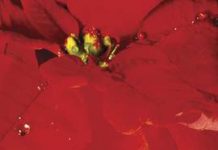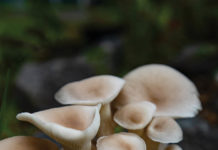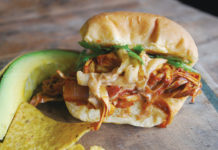Story by Shannon Wianecki | Photography by Forest and Kim Starr
 Maui biologist Art Medeiros calls sandalwood “the vegetable equivalent of gold.” Standing beneath an elder sandalwood’s lichen-laden arms, he surveys the remnants of a forest—a solitary tree knee deep in kikuyu grass.
Maui biologist Art Medeiros calls sandalwood “the vegetable equivalent of gold.” Standing beneath an elder sandalwood’s lichen-laden arms, he surveys the remnants of a forest—a solitary tree knee deep in kikuyu grass.
For a brief moment in history, these Islands were known as Tahn Heung Sahn, the Sandalwood Mountains. Forests ran from mountain to sea, populated with four native sandalwood species, including one endemic to Haleakala. Medeiros says the tree’s fleshy seeds were likely spread by large, flightless birds—the marvelous moa nalo.
Ancient Hawaiians scented their kapa (barkcloth) with powder made from the sweet-smelling wood.
Today, sandalwoods are rare. First came seed-eating rats, which hitched a ride on Polynesian canoes. Then came western traders, who saw dollar signs in the forest. Sandalwood fetches hefty sums in Eastern markets. Carvings, incense, and oil made from the heartwood are treasured for the fragrance that persists, even builds, over years.
“To get it you have to kill the tree,” says Medeiros. “And the older the tree, the sweeter the wood.”


















